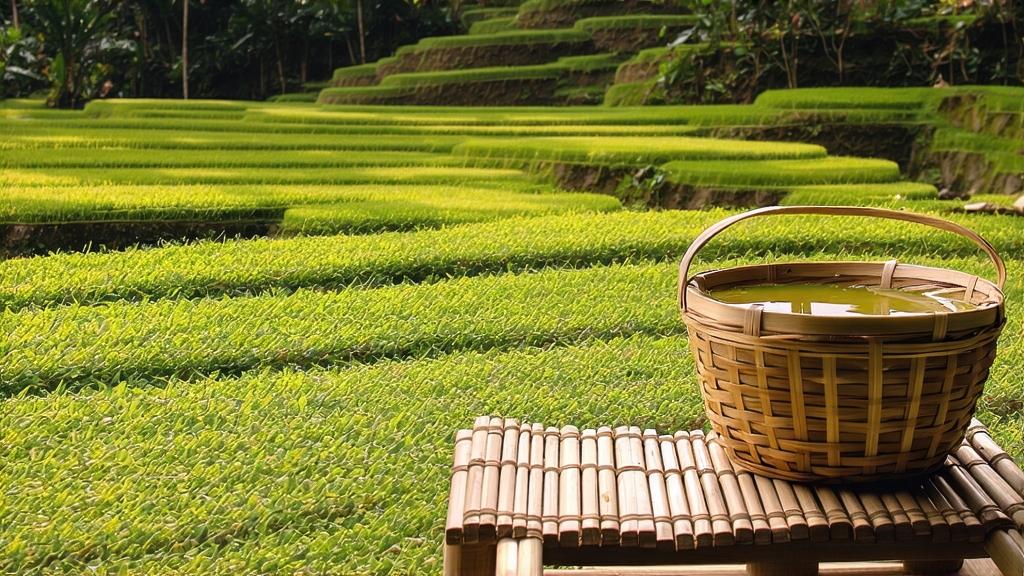
Meng Ding Huang Ya, literally “Yellow Bud from Meng Mountain,” is the least exported yet most aristocratic member of China’s yellow-tea family. For thirteen centuries its tiny spring buds were carried by fast horses along the old Sichuan post road to satisfy the capricious palate of Tang-dynasty emperors; today the same slopes, often wrapped in a pearl-white mist rising from the Min River, still surrender only a few hundred kilograms each April. To international drinkers accustomed to the green flash of Long Jing or the dark drama of Pu-er, this tea offers a quieter revelation: a liquor the color of early morning sunlight on limestone, a scent that walks the line between fresh orchid and warm wheat, and a finish that lingers like the last note of a bamboo flute.
History: from tribute to near extinction
Meng Mountain, 1 450 m above Chengdu’s fertile plain, appears in the earliest monograph on tea, Lu Yu’s Cha Jing (760 CE). The monk Wu Li-zhen is said to have planted seven tea bushes on the summit around 53 BCE; by the Tang dynasty local magistrates were already wrapping the first 365 buds of the year in yellow silk—yellow being the imperial hue—and dispatching them to Chang-an. The Song court institutionalized the practice, and Ming scholars praised the tea’s “golden frost” that surfaced on the cup. Yet the complicated “sealed yellowing” process was almost lost during the turmoil of the 1930s and 40s; only a handful of families in Ya’an kept the craft alive in their kitchens. When the China Tea Corporation revived the tribute gardens in 1972, master Chen Yong-xin had to relearn the art from those aging villagers, using nothing but memory and the nose of his grandfather.
Micro-terroir: why the mountain makes yellow possible
The northern edge of the Sichuan basin traps a perpetual cloud cover that reduces direct sunlight by 30 % compared with the surrounding lowlands. The result is an abundance of theanine and fewer bitter catechins in the buds. Nights remain cool even in late April, so enzymatic activity slows, giving the tea maker a wider window for the critical “men huang” (sealed yellowing) step. The soil is a crumbly slate-quartzite mix, poor in nitrogen but rich in potassium and manganese—minerals that later translate into the tea’s signature “tingling” minerality on the tip of the tongue. Finally, mountain springs percolate through limestone, picking up bicarbonates that buffer the leaf’s organic acids and allow the yellowing enzymes to work without crossing the line into sourness.
Pluck standard: one bud, no leaf, before Qingming
Only the winter-embryo bud is picked, sheathed in its pale green scale and still bent like a fishhook. The harvest window opens around March 20 and closes before April 5, the day of Qingming. A skilled picker can gather 600 g of fresh buds in an hour; 5 kg of these shrink to 1 kg of finished tea, which explains why Meng Ding Huang Ya routinely outsells silver-needle white tea in the domestic luxury market.
Craft: the secret of “men huang”
Yellow tea is often described as green tea with an extra step, but that extra step is a high-wire act. After a brief withering on bamboo trays, the buds are wok-fired at 160 °C for exactly four minutes; this kills the grass-green enzymes yet leaves enough moisture for the leaf to re-activate later. The still-warm buds are then wrapped in thick canvas and placed in the “yellow room,” a cedar-lined chamber kept at 28 °C and 75 % relative humidity. For the next 48 hours the tea master opens each bundle every six hours to let the accumulated carbon dioxide escape and to check the aroma shift from steamed rice to roasted chestnut. When the leaf edge turns a muted golden olive and the bud feels velvety rather than crisp, the second low-temperature drying begins—first at 80 °C, then 60 °C, then 40 °C—each drop of 10 °C extending the session by half an hour. The goal is to lock the “golden frost” (a dusting of soluble theaflavins) on the surface while reducing moisture to 5 %. Done correctly, the tea will age gracefully for up to five years, developing notes of dried